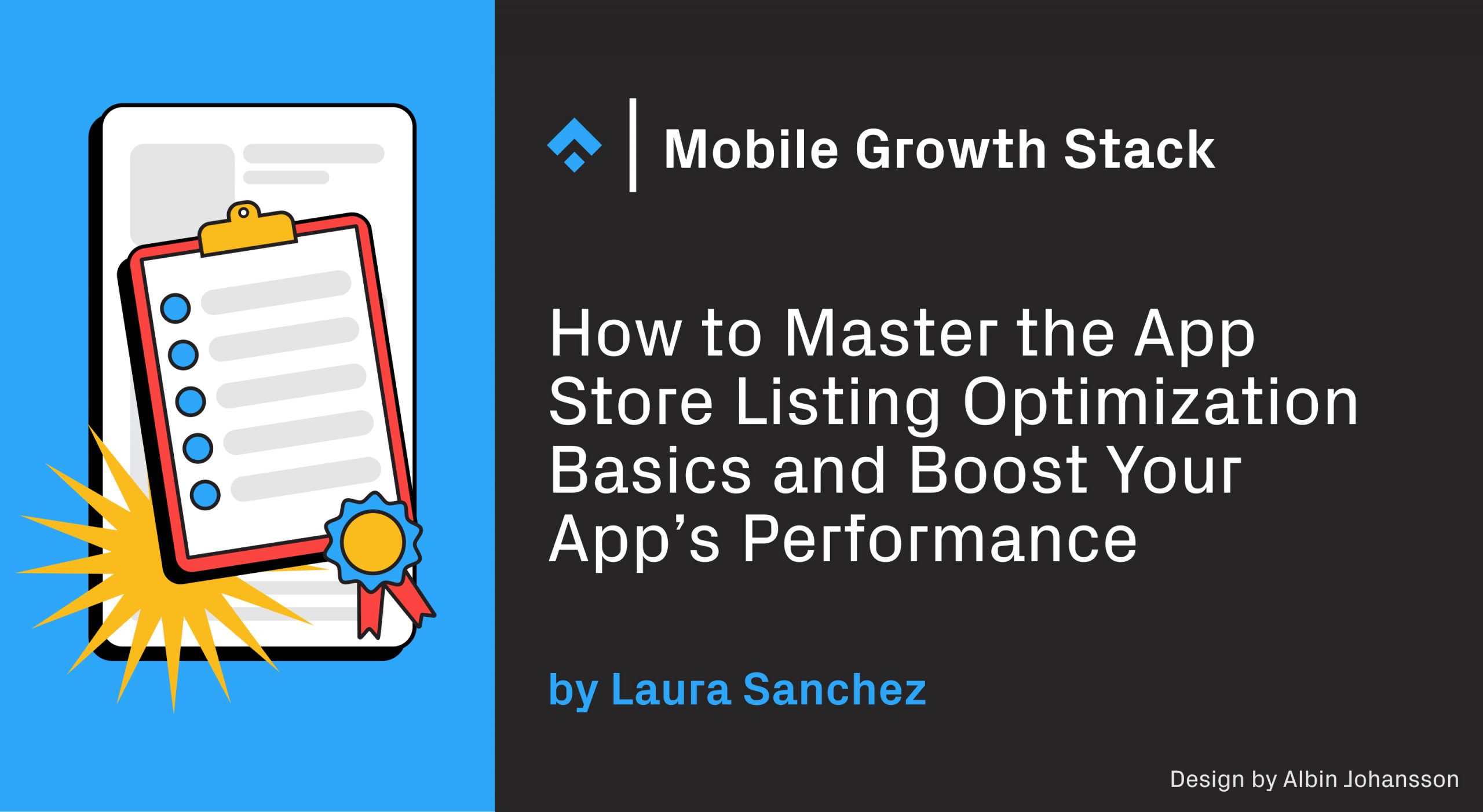
We all know how frustrating it can be when you invest time, effort and money into improving your app store performance only to see little to no uptick in page views or conversions. Plenty of well-meaning articles on app store performance exposit fantastic theoretical results, when in practice securing a positive ROI for your listing isn’t so easy. Best practice examples are hard to implement once other day-to-day activities get in the way. In this article, we’re going to highlight some of the most common issues app store marketers face, as well as strategies you can implement to overcome them (even if there are competing demands on your time).
Let’s get started.
Unattractive or misleading creatives
Many app niches are highly competitive spaces. For example, there may be multiple accounting or cooking apps in your country alone. Having attractive creatives clearly and cleanly showing what your app can do as well as its user experience is crucial for conversion.
One surefire way to lose potential users along the conversion funnel is to not deliver on your promise. Make sure the creatives, as well as the claim in your ads, are consistent with creatives on your listing page.
Iterate the creative elements of your listing page over the course of a few months. This will provide you with enough time to see actionable results, and won’t over stretch you if your app has limited resources.
Designing great creatives
The first step is to have a clear idea of what your brand stands for, its brand voice and what you want the customer to feel when they see your product. All of this will be crucial when communicating its values, competitive advantages, and main message.
Once you know what your app, brand, and message stands for it’s time to brainstorm around those principles. This may sound easier said than done, but holding productive brainstorming sessions is worth committing to. This is where you will generate the bulk of your creative ideas. Be sure to invite team members from outside the design team to get even fresher perspectives.
However, be sure not to lose focus and make sure everyone is on the same page. If you need help conducting a highly productive brainstorming session, check out our article on Brainstorming and Ideation. It focuses on CRM teams but the learnings are transferable.
Here are a few additional ideas to keep in mind when generating thumb-stopping creatives:
- Know your target audience
- Use approved colors and fonts
- Make sure your logo is visible
- Include a short and punchy CTA (for performance ads)
- Less is more – be clear and concise
Follow these steps and your design team will thank you for providing a brief with a singularity of focus and clear creative parameters. This will save time and be easier to fit in with their other day-to-day tasks. Saying ‘just be creative’ doesn’t help anyone – least of all your app store listing.
The app is not user friendly
Using an app for the first time can be confusing, but it really shouldn’t be. If your new users don’t know what to do with your app within the first few interactions, they will uninstall quickly. Here are a few questions to consider when improving usability:
- Are local languages supported?
- Are there too many registration steps?
- Is there a tutorial or are the next steps clear?
- Does your app satisfy the app store search intent of the user?
How to improve it
There are two things you can do to improve your app’s usability. Firstly, ask a third party to check your customer journey to identify any blindspots for the user. Parallel to this, analyze your conversion funnel and identify where users are dropping off the most. For example, if users are dropping off right after sign-up it could be a language or next steps issue. If you’re losing users in the middle of the funnel you could have a problem with retention. If you have an e-commerce app and users aren’t completing their purchases, perhaps the checkout process is too long, or your payment options are not supported.
Once you do this you will have an even clearer understanding of which aspects of your app to prioritize first. Once you have a good list of priorities you can plan together with UX and development teams to roadmap the new changes. This will make optimizing your app less of an ad-hoc process and more of a planned and predictable exercise.
Too few, too many, or incorrect advertising channels
Defining a goal is paramount when considering which advertising channel to use. Will it be brand awareness, sales, or leads? Let’s take a quick look at the advantages of each channel:
Apple Search Ads (ASA)
Identified as one of the most expensive channels to test regarding cost per acquisition, but definitely the one with the highest conversion rate (approximately 60%). Apple Search Ads are definitely the most profitable channel in terms of lead conversion. Apple Search Ads ensure high quality rather than quantity. But if your main goal is to increase volume and reach a higher population you might consider adding GAC, Facebook, or Tiktok (depending on your brand and target).
Google App Campaigns (GAC):
Google is a great option if you want to reach more people with your ads. In comparison to Apple Search Ads, they deliver much higher traffic in a relatively cost-effective manner. Ads will be shown across a number of Google products including Search and YouTube. High-quality designs might even be more important on Google App Campaigns than other channels, so make sure your creatives are tip-top.
Facebook Ads:
When it comes to brand awareness, one of the best channels to leverage is Facebook Ads. Why? Because it delivers your ad to people who may or may not be looking for your app. Facebook’s reach and appeal is so broad that brand awareness is almost guaranteed (depending on budget).
Facebook also offers a wider variety of targeting options to Google or Apple, such as demographic information, user interests, browsing behavior, life events, and more.
Facebook may not be the most efficient channel to connect with high-quality leads (Apple Search Ads does have a higher Conversion Rate) but will help you generate more traffic. Facebook also provides campaign results much faster than Google App Campaigns or Apple Search Ads, meaning you can learn and optimize that much quicker.
Best practice is always to silo your campaign channels by objective. Use more than one channel at once and experiment to see significant results in a much shorter period of time.
Note: You will need to put extra budget aside to test campaigns until you find the perfect balance of ad spend vs. Cost Per Acquisition. Bigger budgets do not always lead to positive ROI. Check the market and historical data and use your budget efficiently.
Emails and Push Notifications are sent at the wrong time
Defining the optimal sending time for newsletters and push notifications is a science in itself. To begin with, try to identify what time of the day or day of the week your users have been most receptive to your communications. This may vary by app or type of communication, but it is at least a good place to start. Optimal times will also vary by industry, so it’s best to analyze long data periods to get the best idea of what works for you. Then it is a case of testing times, messages and message length, to find the perfect mix.
Tip: Customizing your emails and notifications will increase open rates.
Tracking Progress and Performance
Improving the effectiveness of an app store listing is all about building on what works and ditching what doesn’t. To do that effectively you will need to regularly and accurately track your progress and performance. By tracking regularly you can identify best performing ads, creatives, which markets, and which channels are more relevant for your business goals and desired ROI.
What to track?
When analyzing the performance of your app and strategies the most relevant metrics to analyze are:
- Acquisition, downloads, installs, and purchases in a given period of time. Remember to compare performance before and after any change in testing or strategy.
- Channel of acquisition: Are your acquisition numbers from Google, Apple, or Facebook? Analyzing their corresponding CPA will be easier for you to improve your ROI.
- In the case of Google and Facebook, analyze your creatives, observe which ones are more efficient, and try to identify what is working to develop more successful ads.
Conclusion
In conclusion, there are many different strategies you could start testing to improve your desired metric. Remember that improving your app store listing will be a long process; you need to be able to invest time and money.
Always keep your goal in mind, whether it be the number of downloads, Cost Per Acquisition, ROI, or Retention. This will make the process and testing more centralized and easier to improve rather than changing objectives every month.
Before you go
Mobile growth knowledge should be accessible and understandable for all. If you want to connect with Phiture’s industry-leading ASO consultants, as well as over 3,000 app marketing experts, join Phiture’s ASO Stack Slack channel now.
Need further training in ASO? Take a look at Phiture Academy, where we’ve recently launched two courses in ASO for Beginners and Advanced ASO.
At Phiture, we can streamline your App Store Listing for you. Reach out today to learn more about how we can help you better understand creative performance.
Table of Contents














